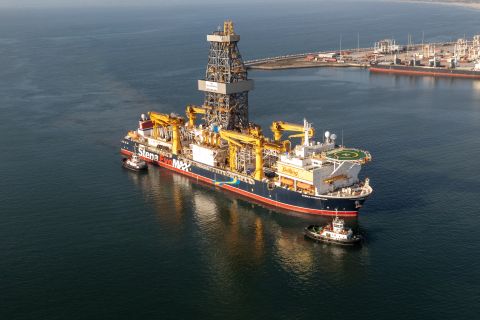Advances in upstream technology and the pioneering actions of smaller independent companies have been directly responsible for the shale boom in the US and Canada, according to former BP CEO Tony Hayward.
Speaking at the recent PETEX 2012 event in London in his latest role as CEO of fast-growing UK independent Genel Energy, he said the resultant dramatic effect of the shale phenomenon on the international energy supply and demand scene had highlighted the key role that gas is likely to play in the future.
With oil demand growing in the Eastern Hemisphere, while remaining relatively slow in the West, Hayward said, “We are in a growth industry, but it is not growing very quickly in terms of oil demand. Gas is growing quicker.”
However, he admitted to being bearish on gas, saying that he did not expect major exports to emerge from the booming US onshore sector. Rather, Hayward said that it would be the fracturing technologies and expertise that would travel abroad. “But this will not happen rapidly.”
He described technology as “riding to the rescue” in terms of the US shale boom. “That’s why the ‘peak oil’ argument will always be wrong. The Stone Age didn’t end because they ran out of stone.” It is likely to be gas that would eventually replace oil in the long term.
In the US, Hayward gave credit for the success of the shale gas and oil phenomenon to the smaller independent companies. “It was the mama and papa companies that made shale gas happen, not Big Oil,” he said. The drivers were mostly “relatively light regulation and good access to funding,” Hayward added. These companies have helped take shale gas from virtually zero in the US to currently around 30% of US supply within a matter of years, with 50% forecasted by the end of the decade.

Shell is bullish on gas and says it will drill more wells in the next decade than in the past 100 years. Pictured is a rig worker on Shell’s Groundbirch tight gas project in British Columbia, Canada, where the company has so far drilled more than 300 wells. (Images courtesy of Shell)
Looking at its impact on the global energy scene, Hay-ward said that the rise of shale caused coal demand in the US to fall by an estimated 20%. This, in turn, has led to a rise in coal exports to Europe – causing prices to crash there. This also has had a knock-on effect with regard to emissions, with COlevels having actually risen in Europe while falling in the US as power stations in Europe go back to burning coal instead of gas.
Global gas development
Natural gas was also flagged as potentially being the backbone for future energy supplies around the world by Shell’s Glen Cayley, vice president, Technical. Also speaking at PETEX on the company’s perspective of global gas developments now and in the future, he highlighted the three A’s that give gas a number of advantages as an energy source: “It’s abundant, it’s acceptable, and it’s affordable,” he said.
“It’s worth pointing out that Shell will drill more wells in the next decade than in the past 100 years,” Cayley said. “There is over 100 years of supply for sure in the United States. The global estimate is around 250 years of supply, and that’s probably conservative. Half of that is conventional, half is unconventional.”
Cayley described Shell as being bullish on gas and outlined the company’s ongoing plans and developments for LNG projects such as its multibillion dollar Prelude Floating LNG project in the Browse basin offshore western Australia. The FLNG project will be a world first, as the vessel will also be the largest floating offshore facility ever built.
He went on to outline Shell’s gas-to-liquids (GTL) activity, which he described as being “a long story.” The company has recently made major progress in this area, with its 140,000 b/d Pearl GTL facility in Qatar coming onstream just last year.
In the area of tight oil and gas, he described the US and Canada as “an energy revelation” and highlighted the company’s work in projects such as Groundbirch in Canada. That project is currently producing more than 200 MMcf/d of gas with more than 300 wells drilled using six rigs. He also flagged the Eagle Ford play in Texas as “ramping up rapidly.”
However, in Europe there has not been much movement, Cayley continued, although it was starting in earnest in countries such as China. It would be important for Europe to move quickly along the learning curve in terms of getting the costs of drilling wells down.
Growing demand
Another speaker, Carl Trowell, president, Schlumberger Production Management, underlined the fact that the number of people on the planet had recently passed the 7 billion mark and that energy demand would naturally continue to rise. This demand is driving the oil and gas industry onwards, with Trowell describing the rise of shale oil and gas as a “true paradigm shift.” Shale resources will provide a new source of reserves, but the industry must still search for conventionals.
Trowell highlighted water management as a key issue for the upstream sector. There is an increasing need for water management as shale E&P is so water-intensive with its fracing and production requirements. With aging conventional fields also increasingly moving toward water injection, the issue is becoming even more important.
“The E&P industry must view water as a strategic component of the value chain,” he said. “Water will be a ‘touchstone’ issue.”
Trowell described the way shale oil and gas is being developed in the US as being unsustainable outside of that country because of the cost of service delivery in areas such as Europe. Each well there, for example, would need to produce up to three times as much as in the US to meet the likely costs. “The value delivery of drilling wells is going to have to take another quantum leap,” he said.
Trowell also highlighted future technology trends as needing to result in more efficient methods for fracturing and stimulation, better reservoir evaluation and completion, and a step change in subsurface imaging.

Global gas demand is expected to double from 2010 to 2050, according to Shell. Reassuringly, the company also currently estimates there are 250 years of global supplies left.
Recommended Reading
Exxon Mobil Guyana Awards Two Contracts for its Whiptail Project
2024-04-16 - Exxon Mobil Guyana awarded Strohm and TechnipFMC with contracts for its Whiptail Project located offshore in Guyana’s Stabroek Block.
Trio Petroleum to Increase Monterey County Oil Production
2024-04-15 - Trio Petroleum’s HH-1 well in McCool Ranch and the HV-3A well in the Presidents Field collectively produce about 75 bbl/d.
Stena Evolution Upgrade Planned for Sparta Ops
2024-03-27 - The seventh-gen drillship will be upgraded with a 20,000-psi equipment package starting in 2026.
Shell Taps TechnipFMC for 20K System for Sparta
2024-02-19 - The deepwater greenfield project in the Gulf of Mexico targets reserves in the high-pressure Paleogene reservoir.
To Dawson: EOG, SM Energy, More Aim to Push Midland Heat Map North
2024-02-22 - SM Energy joined Birch Operations, EOG Resources and Callon Petroleum in applying the newest D&C intel to areas north of Midland and Martin counties.





